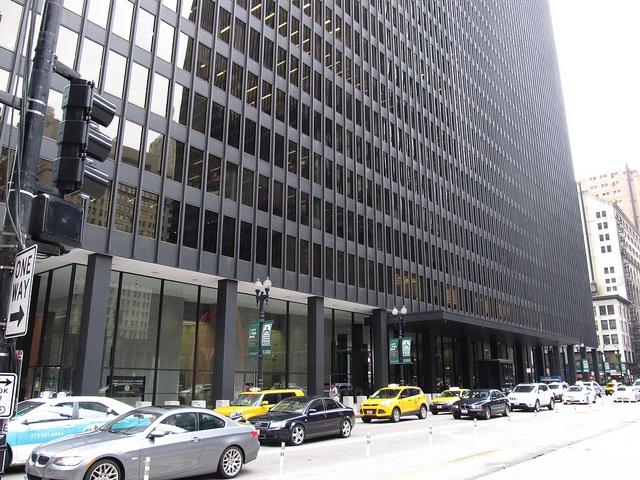
Last week the U.S. Court of Appeals for the 7th Circuit in Chicago upheld a Department of Energy rule that incorporated the social cost of carbon in regulations covering commercial refrigeration equipment.
Under the Obama administration, government agencies may incorporate the social cost of carbon (SCC) in order to estimate the climate benefits. Set at $37 a ton by the DOE, the SCC accounts for a wide array of effects from greenhouse emissions, including public health costs, impacts on agricultural activity, and property damage from disasters such as storms or floods.
The decision at first glance seems innocuous. Shortly after the Obama administration implemented the SCC accounting rule in 2014, the trade association Air-Conditioning, Heating & Refrigeration Institute (AHRI) and Wisconsin-based Zero Zone, Inc. petitioned for a court review of how the DOE rules applied to walk-in refrigerators and freezers. Both parties alleged that the new DOE rules were unfair and that the agency had not followed the proper protocols in adopting the SCC.
But in a 68-page decision, the 7th Circuit ruled unanimously that the DOE “acted within its authority and did not violate any regulatory or statutory provisions.” The decision included a copious discussion of precedent and the parsing of what a “clarification” of a rule means as opposed to a “modification.” All three judges were Republican appointees.
Ironically, Judge Kevin Ripple, who wrote last week’s decision, was appointed by Ronald Reagan. And it was the Reagan administration that sparked controversy in 1981 by ordering federal regulators to undertake cost-benefit analyses when considering new regulations. Over three decades later, this decision led the DOE and other government agencies to arrive at a dollar amount for the SCC in order to estimate the financial impact of any new rules.
Furthermore, as environmental writer Ari Phillips points out, this is the first time that a U.S. court has ruled on the legality of carbon accounting in any form. For decades, arguments over the need to enact regulations to address environmental risks had long relied on qualitative reasons such as clean water, land remediation, or to “save the earth for our children and grandchildren.” But the reality is that businesses, and many citizens, can relate better to numbers in order to understand why that dirty power plant needs to transition to a new fuel, or how more efficient vehicles can have be a net positive on our quality of life.
The trick is to find that agreed-upon rate, which is nearly impossible. As John Wihbey for Yale Climate Connections discussed last year, some researchers believe the SCC should be priced as high as $220 a ton. Therefore, the figures used by the EPA and DOE are relatively conservative.
Disagreements on SCC pricing notwithstanding, watch for more regulators to incorporate the SCC when justifying the need for new environmental regulations. Republicans, industry groups and Chambers of Commerce will continue to fight any new carbon accounting rules, saying they are bad for business. But arriving at a dollar figure will actually help businesses plan for the long term. In the end, businesses that are already taking an aggressive stance on climate change risks, whether they are investing in clean energy or more efficient transportation, now have a new way to communicate to their stakeholders how these programs are making a difference. In the near future, this decision coming out of a Chicago courtroom could change how companies disclose their environmental and social performance.
This ruling will also prove to be a shot in the arm for the environmental justice movement, as advocates now can present financial data, making their claims even more credible. Those who say environmental degradation has a disproportionate impact on the poor can now also back up their claims with financial data, statistics that can only help their cause even more.
Image credit: Ken Lund

Leon Kaye has written for 3p since 2010 and become executive editor in 2018. His previous work includes writing for the Guardian as well as other online and print publications. In addition, he's worked in sales executive roles within technology and financial research companies, as well as for a public relations firm, for which he consulted with one of the globe’s leading sustainability initiatives. Currently living in Central California, he’s traveled to 70-plus countries and has lived and worked in South Korea, the United Arab Emirates and Uruguay.
Leon’s an alum of Fresno State, the University of Maryland, Baltimore County and the University of Southern California's Marshall Business School. He enjoys traveling abroad as well as exploring California’s Central Coast and the Sierra Nevadas.














